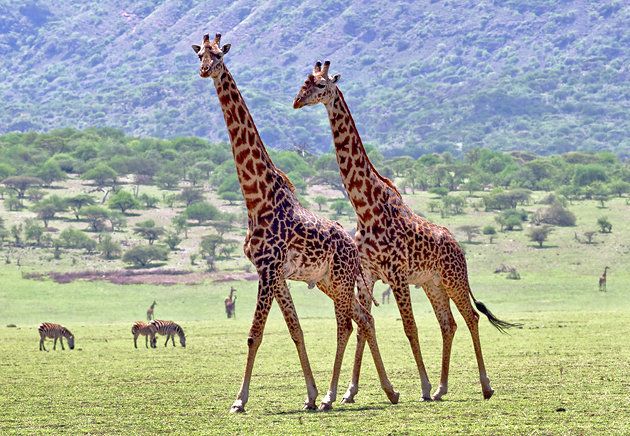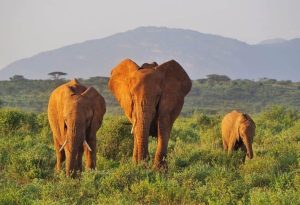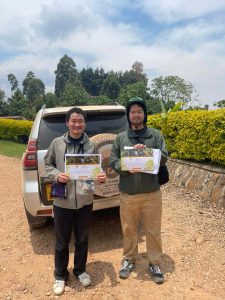What is the Ngorongoro Conservation Area?
The Ngorongoro Conservation Area is a protected region in northern Tanzania that combines wildlife conservation with human habitation. Established in 1959, it covers around 8,292 square kilometers and includes the world-famous Ngorongoro Crater. The area protects diverse ecosystems ranging from savannah and forests to swamps and lakes. Authorities manage it as a multiple land-use area where wildlife and the semi-nomadic Maasai people coexist.
Why is the Ngorongoro Conservation Area famous?
The Ngorongoro Conservation Area is famous for the Ngorongoro Crater, the world’s largest intact volcanic caldera. The crater floor supports one of the densest populations of large mammals in Africa, including lions, elephants, and black rhinos. UNESCO declared the area a World Heritage Site in 1979 because of its ecological and cultural value. Visitors recognize Ngorongoro as a natural wonder and one of Africa’s premier safari destinations.
How big is the Ngorongoro Conservation Area?
The Ngorongoro Conservation Area spans approximately 8,292 square kilometers. Within it, the Ngorongoro Crater alone measures about 260 square kilometers, with a diameter of 19 kilometers and walls rising 600 meters high. The size of the conservation area allows for the protection of diverse habitats, ranging from open plains to montane forests, rivers, and lakes. This vastness supports a high variety of wildlife and plant life.
What wildlife can you see in the Ngorongoro Crater?
The Ngorongoro Crater hosts an estimated 25,000 large animals. Visitors see wildebeests, zebras, gazelles, buffaloes, and warthogs grazing on the crater floor. Lions thrive here in high densities, making the crater one of the best places to observe them. Black rhinos find refuge in the area, offering rare sightings. Hippos occupy permanent water sources, while elephants roam the forests on the crater rim. The crater delivers unrivaled game-viewing experiences.
Can you see the Big Five in the Ngorongoro Conservation Area?
Yes, visitors can see the Big Five in the Ngorongoro Conservation Area. Lions dominate the crater floor, and leopards roam the forested crater rim. Elephants, especially older bulls with large tusks, appear frequently. Buffaloes graze in large herds, and black rhinos remain one of the park’s highlights. Although spotting leopards and rhinos requires patience, the chance to see all five species in one location makes Ngorongoro unique.
How was the Ngorongoro Crater formed?
The Ngorongoro Crater formed around two to three million years ago after a massive volcanic eruption. The volcano collapsed inward, creating a large caldera. Over time, the crater developed lakes, grasslands, and forests, supporting an array of wildlife. Its enclosed geography created one of the most unique ecosystems in the world. The geological formation remains one of Ngorongoro’s defining features and continues to attract geologists and tourists alike.
What activities can tourists do in the Ngorongoro Conservation Area?
Tourists enjoy a wide range of activities in Ngorongoro. Game drives in the crater allow close encounters with wildlife. Walking safaris take place on the crater rim and in other parts of the conservation area. Bird watchers observe flamingos at Lake Magadi and hundreds of other bird species. Cultural tours with the Maasai provide insights into traditional life. Visitors also stop at Olduvai Gorge, one of the most significant archaeological sites in the world.
Can you do a walking safari in the Ngorongoro Conservation Area?
Yes, walking safaris are possible in designated areas of Ngorongoro. Rangers lead these walks along the crater rim, Empakaai Crater, and Olmoti Crater. Walking safaris let travelers explore landscapes on foot, observe smaller wildlife, and learn about plants and tracking techniques. They also provide panoramic views of the crater and surrounding highlands. Walking safaris offer an intimate way to experience the ecosystem beyond vehicle-based game drives.
What cultural experiences can you find in Ngorongoro?
Cultural experiences form an important part of visiting Ngorongoro. Travelers often tour Maasai villages to learn about their traditions, livestock herding, and beadwork. Local guides explain how the Maasai coexist with wildlife and maintain their customs. Visitors also enjoy dance performances, storytelling, and opportunities to purchase handmade crafts. These cultural activities connect tourists with the human heritage of the conservation area.
How do the Maasai people live in the Ngorongoro Conservation Area?
The Maasai people live in the Ngorongoro Conservation Area as pastoralists. They herd cattle, goats, and sheep across the plains. Their circular villages, known as manyattas, consist of huts made from mud and sticks. The Maasai follow traditional customs, wearing shukas and practicing age-old ceremonies. Despite modern influences, they preserve much of their heritage while coexisting with wildlife. Their presence adds cultural depth to the conservation landscape.
What is the best time to visit the Ngorongoro Conservation Area?
The best time to visit Ngorongoro depends on visitor preferences. The dry season, from June to October, provides clear views and easier wildlife spotting. The wet seasons, from November to May, make the crater greener and attract migratory birds. Calving season for wildebeests occurs from January to March, offering dramatic wildlife scenes. Each season delivers unique experiences, making the conservation area a year-round destination.
How many days do you need in the Ngorongoro Conservation Area?
Most travelers spend at least two to three days in Ngorongoro. One day covers a full game drive in the crater, while extra days allow for walking safaris, cultural visits, or trips to nearby sites like Olduvai Gorge. Some itineraries combine Ngorongoro with Serengeti and Tarangire for longer safaris. Spending multiple days ensures visitors experience the diversity of the landscape and activities.
How do you get to the Ngorongoro Conservation Area from Arusha?
Travelers reach Ngorongoro Conservation Area from Arusha by road or air. By road, the drive takes about three to four hours, passing through Karatu before reaching the park gate. Regularly maintained roads make the journey comfortable. For faster access, visitors use chartered flights to nearby airstrips, followed by short transfers. Tour operators often arrange both transport and guided safaris, making access convenient.
Is the Ngorongoro Conservation Area part of the Serengeti ecosystem?
Yes, the Ngorongoro Conservation Area connects directly with the Serengeti ecosystem. Wildlife moves freely between the two regions, especially during the annual wildebeest migration. The conservation area also links with Lake Natron and Tarangire, creating a larger protected landscape. This connection supports biodiversity and migratory patterns. Ngorongoro plays a vital role in maintaining the ecological balance of northern Tanzania.
What makes the Ngorongoro Conservation Area a UNESCO World Heritage Site?
UNESCO recognized the Ngorongoro Conservation Area as a World Heritage Site because of its ecological, geological, and cultural significance. The area hosts exceptional wildlife populations, the world’s largest intact volcanic caldera, and archaeological sites such as Olduvai Gorge. The coexistence of humans and wildlife within a protected area also contributes to its uniqueness. These combined values make Ngorongoro one of the world’s most important conservation landscapes.
Can you stay overnight in the Ngorongoro Conservation Area?
Yes, visitors can stay overnight in lodges and camps located inside and around the conservation area. Options range from luxury lodges on the crater rim, which offer panoramic views, to mid-range and budget camps. Staying overnight allows travelers to enjoy early morning game drives, sunsets, and cultural visits. Overnight stays enhance the safari experience by giving visitors more time to explore.
What lodges and camps are available in the Ngorongoro Conservation Area?
The Conservation Area offers a variety of accommodation options. Luxury lodges such as Ngorongoro Crater Lodge provide high-end comfort with spectacular views. Mid-range options like Rhino Lodge combine convenience with affordability. Public and special campsites cater to budget travelers and adventurers. Each choice allows visitors to stay close to wildlife and enjoy easy access to the crater and surrounding attractions.
How much is the entrance fee to the Ngorongoro Conservation Area?
Entrance fees vary depending on nationality and residency. International visitors typically pay around $70 per adult per day for entry, while East African residents pay reduced rates. Vehicle fees and crater service fees apply in addition to park entry. Children under a certain age often receive discounts. Travelers should check with the Ngorongoro Conservation Area Authority for updated rates before planning visits.
What birds can you see in the Ngorongoro Conservation Area?
The Ngorongoro Conservation Area supports more than 500 bird species. On the crater floor, flamingos gather around Lake Magadi in large flocks. Raptors such as augur buzzards, eagles, and vultures soar above the rim. Grassland species include kori bustards and crowned cranes. Forested areas provide habitats for turacos and hornbills. Bird watchers find Ngorongoro a rewarding destination throughout the year.
Is Ngorongoro safe for tourists?
Yes, Ngorongoro remains safe for tourists when visited with registered guides and tour operators. Authorities enforce strict conservation rules to protect both wildlife and visitors. Travelers follow park regulations, such as staying inside vehicles during game drives and respecting cultural sites. Lodges and camps provide secure accommodation. With proper planning, visitors experience Ngorongoro safely and comfortably.



